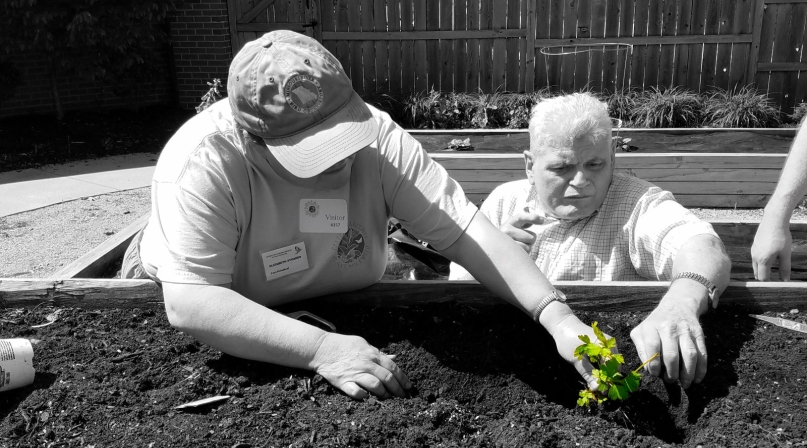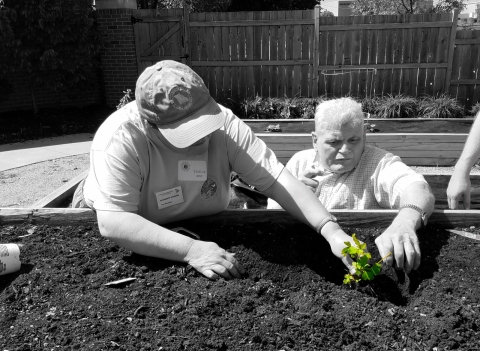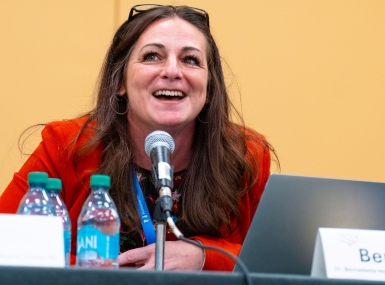Counties support aging residents with developmental disabilities
Author
Upcoming Events
Related News

Key Takeaways
Government officials, community leaders and gerontologists have discussed for years the best way for social service organizations and local governments to meet the support needs of the aging baby boomer population. But those discussions can often exclude how to best serve aging individuals with intellectual and developmental disabilities (IDD). A developmental disability is a chronic disabling condition present before age 22 due to physical and/or mental impairments such as intellectual disability, cerebral palsy, epilepsy, autism or Down syndrome.
According to research published by the Institute on Disability and Human Development, by 2030, the number of people over the age of 60 with developmental disabilities will increase to 1.4 million, up from 850,600 reported in the 2010 Census. Due to medical advancements, individuals with IDD are living longer and require specialized care in retirement. Local governments that offer aging services must take these needs into account in order to adequately serve all residents of advanced age.
Johnson County, Kan. is located in the Kansas City metro area and is home to more than half a million people. The Community Developmental Disabilities Organization oversees the 73 public, private and non-profit IDD service providers in the county. Johnson County Developmental Supports (JCDS) is an agency within the county government and is the largest provider of IDD services in the county. Approximately 550 people receive residential, employment, case management and life enrichment services from JCDS.
JCDS utilizes regional transit, microtransit services and a rideshare partnership. Many individuals also rely on family for transportation to the Mark D. Elmore Center. Direct support professionals (DSPs) also provide transportation for the individuals who receive services.
The retirement program is open to individuals who are over the age of 55. The program has 13 full-time staff members. Staff coordinates activities, dispenses medication, assists individuals to meet personal goals as outlined in their person-centered support plans, and advocates alongside them in their day-to-day lives.
Staff is supplemented through a robust volunteer base. The diverse group of volunteers are recruited through county events, volunteer fairs, the website, social media, newsletters, local media articles and more.
At an estimated annual cost of $600,000 to run the retirement program, funding comes from two sources: Home and Community Based Services waiver/Medicaid, which is facilitated through the Kansas Department of Aging and Disability Services, and the county government. Grants are always evaluated and assist with the program.
“When we first started the retirement program, we had about 12 or 13 individuals and those folks were between the ages of 50 and 60,” said Tiffany Hanna, activity coordinator for the retirement program. But since the program began in 2010, it has slowly expanded to 34 people as of July 2019.
The JCDS retirement program is divided into three groups: Sage, Active Agers and Dementia Supports. The retirement program is structured so participants can maintain integration in the community while benefiting from therapeutic intervention and daily in-house leisure, health and wellness and educational activities.
The Sage group does primarily in-house activities that are provided along with a daily activity around Johnson County, such as volunteering with a food pantry.
The Active Agers group currently receives services offsite at a building leased from Starfish Project, which is a local non-profit. Participants in this group enjoy a range of daily activities such as sporting events, plays and music therapy.
In August 2017, Dementia Supports started with eight participants. Currently, 14 people with Alzheimer’s and Dementia participate in the retirement program and a total of 24 people with those diagnoses receive services from JCDS.
“We realized that the folks who were starting to present with dementia were needing to be more or less supported in place, where they were at,” said Hanna. “Their day is not as defined as the other two groups.”
One of the underlying reasons for growth in this group is the prevalence of those diseases among some individuals with IDD. On average, people with Down syndrome have a more than 50 percent chance of an Alzheimer’s or Dementia diagnosis, and it tends to present at an earlier age, often in their 50s or 60s, according to the National Institute on Aging.
Dementia Supports are provided in service areas where lighting, activities, sounds and decorations are more conducive for success for a person with those conditions. DSPs receive specialized training in order to give the highest quality of care. Staff is offered training on compassion fatigue, coping with grief and other issues that may arise from this specialized line of work.
In-home support is also a vital part of the services the county offers. JCDS does not own any residences, but staff does offer residential support to more than 100 adults living around the county.
Friends of JCDS is a non-profit that provides housing and special assistance for individuals served by JCDS. They own 14 homes in Johnson County and are expanding to include more homes. They currently have one home designed specifically to support individuals with dementia, and dementia supports are considered as they renovate the additional homes.
“We spent last year bringing [the other] 13 homes up to that standard — where we could — so flooring is continuous, we’ve prepped for ceiling lifts, we’ve added additional accessible bathrooms, etcetera,” said Janel Bowers, chief development and operations officer for Friends of JCDS.
Funding for Friends of JCDS comes from private donations, charitable foundations, city and county distribution of Community Development Block Grant funding and affordable housing grants.
JCDS is currently considering whether to lower the qualifying age to enter the retirement program to 50 to capture an increase in individuals who would like to stop working and access retirement services.
Additional considerations will need to be made for space accommodation and programming for a larger number of participants.
“In order to secure the necessary funding, JCDS staff, people served and other advocates in the state are meeting with elected officials to communicate the need for appropriate funding for IDD services in Kansas,” said JCDS Executive Director Chad VonAhnen.
“Low Medicaid reimbursement rates and a lack of funding for the IDD waiver waiting list from the State of Kansas make it harder for people with IDD to access services and live independently throughout their lives.”

Attachments
Related News

County officials shed light on childhood education and care
Inadequate childcare causes American workers to lose between 9 million and 26 million hours of work in any given week and has a negative impact on children’s development.

Counties can help troubled youth thrive
Combatting crime among youth means providing them with enriched education environments and mentorships, access to green spaces and opportunities for social connection and skill strengthening according to Bernadette Hohl, from the Philadelphia Department of Public Health.

